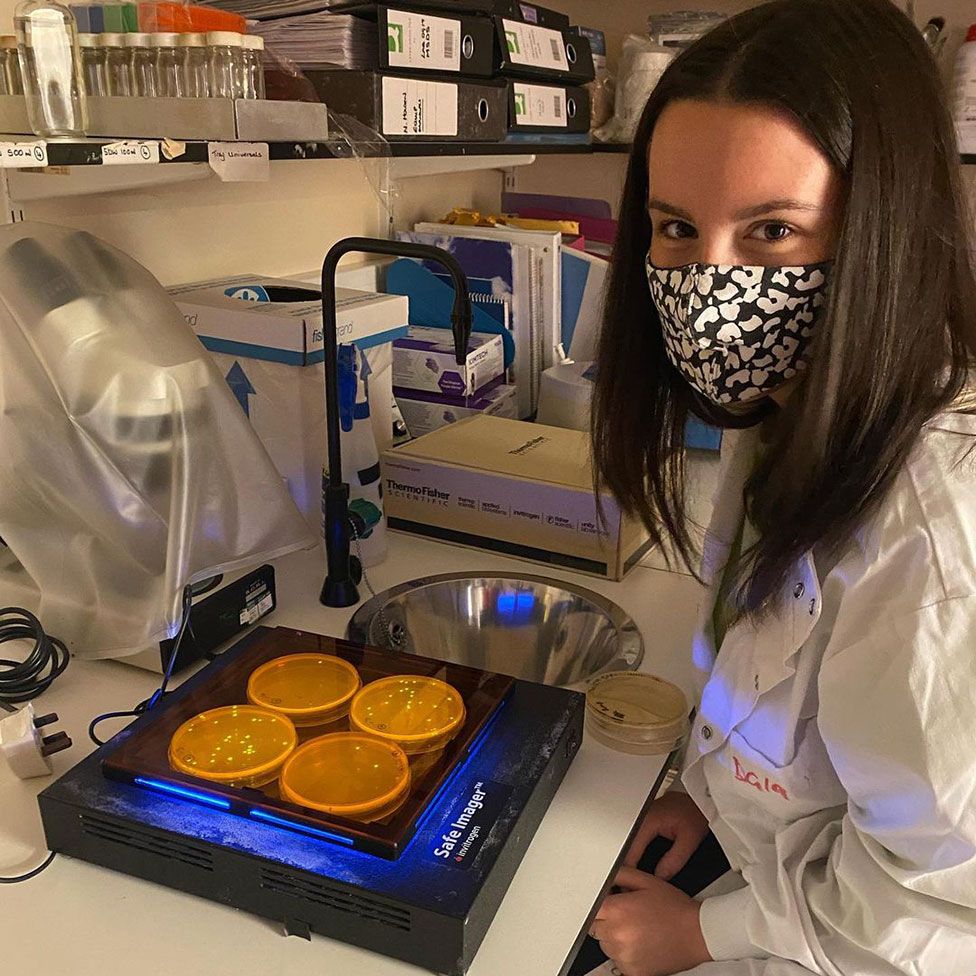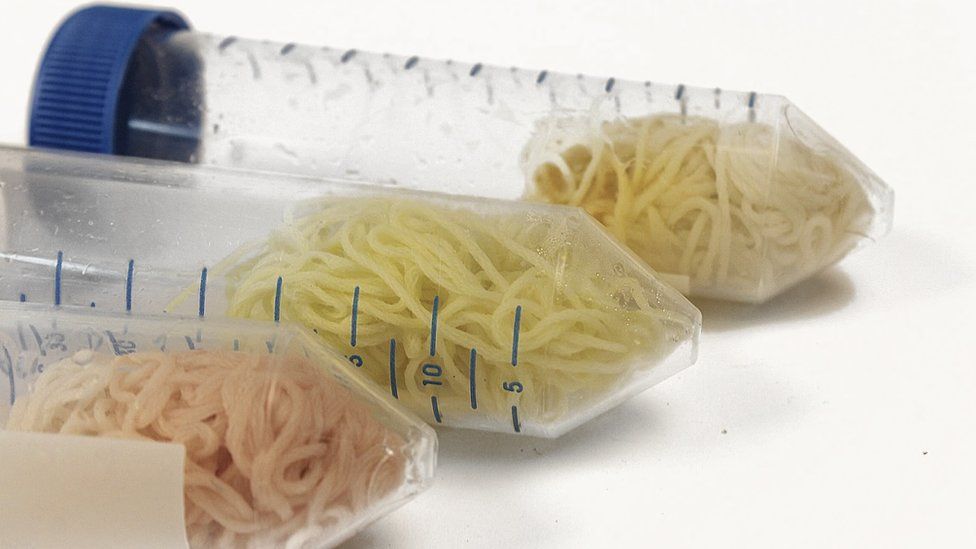On TikTok, a Scottish artist who uses her own bacteria to make jewellery has achieved renown.
Tens of millions of people have watched Chloe Fitzpatrick’s before-and-after videos that she has uploaded on social media.
Samples taken from her skin and plants develop into colours that can be used to dye jewelry made from resin.
“Bacteria is stereotypically gross, but I’m trying to show its beauty,” Chloe, from Bo’ness, Falkirk, told BBC Scotland.
The 21-year-old graduated from Duncan of Jordanstone College in Dundee with a first-class degree in design in the summer.
Her final bacteria jewellery project won her the Sir James Black award, which recognises outstanding contributions to research and scholarship.
“I think my videos have got a lot of views because it’s a strange idea,” she said.
“A lot of people have followed along with the process since it takes time.
“But I’m glad that people are seeing the fascinating side of bacteria and my videos are opening up a new perspective.”

Chloe swabs parts of her body, or plants, and transfers the samples to petri dishes with a special growth medium inside called agar.
The bacteria samples are covered and allowed to multiply into coloured colonies for about a week at room temperature.
She then isolates particular colours in a new dish so they can multiply further.
The colours can be used to dye materials like cotton clothing or resign jewellery sustainably.
“When you press your hands and feet into the agar plates, you get lots of different reds, oranges, and yellows.
“Everyone’s bacteria is so different and develops differently,” she said.

And she claims it is more environmentally friendly than traditional dying processes used in the textile industry.
“They used a lot of harmful chemicals,” she said.
“Using bacteria is an eco-friendly alternative, they multiply fast, and you get a good range of colours.”
Chloe has mostly created rings and she has even used the bacteria dye to create resin “gemstones”.
Each sample is a gamble, but she has noticed some patterns in how the bacteria develops.
She said: “Human bacteria tend to have more colours, especially from the skin.
“So humans tend to have a variety of pinks, reds, and yellows, and while plants can show the same colours, it is normally in a smaller amount.”

She has worked with scientists at the University of Dundee throughout the development of the process, to ensure the experiments are streamlined and safe.
She said: “Everything is tested thoroughly to make sure the bacteria has been killed off.
“I want to test the limits of this process as there’s so much I can do with it.
“I wanted to be part of the BioArt movement, which is a collaboration of art and science.
“I believe the art world is heading in that direction since there’s a lot of possibilities and it’s not been fully explored yet.”
Examples of her work are currently on display in an exhibition of BioArt at Kulanshi Art Centre in Nur-Sultan, Kazakhstan
And she has been commissioned by the University of Dundee to create a bacteria-inspired sculpture for the medical garden outside of the School of Life Sciences.
